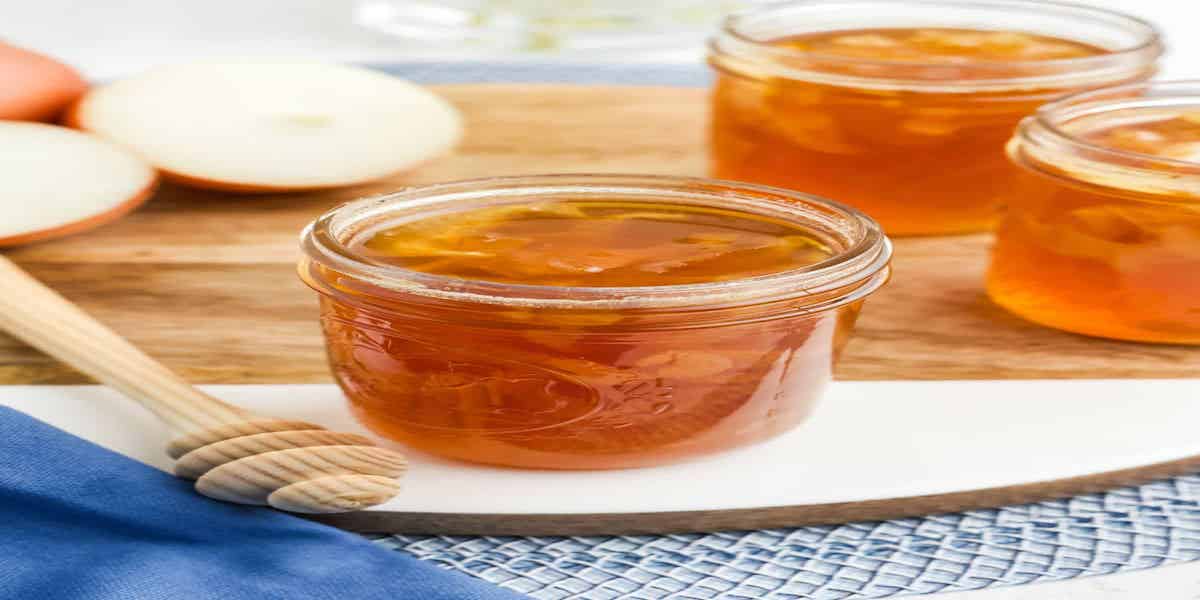As the winter season approaches, we often find ourselves battling colds, flu, and the general malaise that comes with the colder months. One of the best-kept secrets in the world of natural remedies is DIY Fire Cider, a spicy, immune-boosting tonic that can give your body the extra edge it needs to stay healthy during the winter. This traditional herbal remedy has been used for centuries, harnessing the power of vinegar, spices, and herbs to fight off illness and promote overall wellness. Let’s dive into the benefits of Fire Cider, its history, and how you can make your own potent blend at home.
What is Fire Cider?
Fire Cider is an herbal tonic that combines the health benefits of raw apple cider vinegar with powerful, immune-boosting ingredients like garlic, ginger, horseradish, onions, and various herbs. It’s a natural remedy known for its ability to boost immunity, improve digestion, and fight inflammation. Fire Cider has been popularized in recent years by herbalists like Rosemary Gladstar, who have continued to advocate for its use in modern herbal medicine.
The blend’s effectiveness comes from its rich antiviral, antibacterial, and antifungal properties. Each ingredient plays a crucial role in enhancing the body’s natural defenses, making it a go-to tonic for winter wellness. When prepared and consumed regularly, it becomes your body’s first line of defense against seasonal colds and flu.
Key Benefits of Fire Cider
1. Boosts Immunity
At the heart of Fire Cider’s effectiveness is its ability to supercharge your immune system. The combination of raw apple cider vinegar and other natural ingredients makes it a powerful tool to fend off colds and respiratory infections. Ingredients like garlic and ginger are known for their antiviral and antibacterial properties, while horseradish works to clear sinuses, helping you breathe better when congestion strikes.
2. Anti-Inflammatory Properties
Chronic inflammation is a common underlying factor in many diseases. Fire Cider’s blend of ingredients is rich in anti-inflammatory compounds, especially turmeric and ginger, which are known to reduce inflammation in the body. This can help alleviate symptoms of arthritis, sore muscles, and other inflammatory conditions.
3. Digestive Aid
One of the lesser-known benefits of Fire Cider is its ability to improve digestive health. The acidity of apple cider vinegar helps balance stomach pH, promoting better digestion and nutrient absorption. It also encourages the growth of healthy gut bacteria, which plays a significant role in overall immune function.
4. Clears Congestion
Thanks to ingredients like horseradish and hot peppers, Fire Cider is an excellent remedy for sinus congestion. Horseradish, in particular, is a potent decongestant that can help clear blocked sinuses and relieve respiratory issues. This makes it a go-to tonic for those suffering from seasonal allergies, colds, or sinus infections.
Here’s a detailed recipe for your homemade Fire Cider, a potent tonic known for its health benefits:
Ingredients:
- 1 large Onion – chopped
- 1 whole head of Garlic – peeled and cloves separated
- 1 piece of Horseradish Root (about 4 inches) – grated
- 1 piece of Ginger Root (about 4 inches) – grated
- 1 piece of Turmeric Root (about 2 inches) – grated (or use 1 tablespoon turmeric powder if fresh isn’t available)
- 1-2 Citrus Fruits (like lemons, oranges, or grapefruit) – zested and juiced
- 1 teaspoon Sea Salt (Note: minerals in himalayan salt will promote growth of undesired bacteria)1
- 1 teaspoon black peppercorns
- 2-3 sprigs Fresh Rosemary
- 2-3 sprigs Fresh Thyme
- 1-2 teaspoons Cayenne Pepper – or to taste
- Raw Unfiltered Apple Cider Vinegar – enough to cover all ingredients
- Raw Honey – to taste, added after the soaking period
Instructions:
1. Prepare Your Ingredients:
- Chop the onion finely.
- Peel the garlic cloves.
- Grate the horseradish, ginger, and turmeric roots. If you’re using turmeric powder, you can mix it in later with the cayenne.
2. Combine Ingredients:
- In a large glass jar (like a mason jar), combine the onion, garlic, horseradish, ginger, turmeric, citrus zest, salt, peppercorns, rosemary, thyme, and cayenne pepper.
- Add the zest of your citrus fruits (you can use a combination of lemon, orange, and grapefruit for a varied citrus flavor), and then squeeze in the juice.
3. Add Spices:
- Sprinkle in the cayenne pepper. Start with 1 teaspoon if you’re unsure about the heat.
4. Pour in Vinegar:
- Pour enough apple cider vinegar over the mixture to cover all ingredients completely. Make sure everything is submerged to prevent spoilage.
5. Seal and Store:
- Cover the jar tightly with a non-reactive lid (like plastic or a glass lid with a plastic insert, as vinegar can react with metal).
- Store the jar in a cool, dark place. Shake the jar daily or as often as you remember to ensure the ingredients are well mixed.
6. Soaking Period:
- Let the mixture steep for 3-4 weeks. This allows the flavors to meld and the vinegar to extract all the beneficial compounds from the ingredients.
7. Strain the Mixture:
After the soaking period, strain the contents through a fine mesh strainer, cheesecloth, or a nut milk bag to remove all the solids. Squeeze out as much liquid as you can.
8. Add Honey:
- Taste your fire cider. If it’s too sharp or spicy, start by adding honey a tablespoon at a time, stirring well, until you reach the desired sweetness and balance. Honey not only sweetens but also adds to the medicinal properties of the cider.
9. Bottle:
- Pour the strained and sweetened fire cider into clean, dark glass bottles for storage. These should be kept in a cool, dark place, but refrigeration extends its shelf life and keeps it fresher longer.
Usage:
- Dosage: Start with a teaspoon a day, especially if you’re new to fire cider, to see how your body reacts. You can increase to a tablespoon or more over time.
- Purpose: It’s traditionally used as a health tonic to support immune function, digestion, and overall wellness, especially during cold and flu season.
This recipe can be adjusted to your taste by altering the quantities of ingredients, especially the cayenne for heat preference. Enjoy your homemade Fire Cider!
Footnotes
- This is a list of undesirable bacteria and detailing potential health effects from minerals in Himalayan salt involves looking at both microbiological contaminants and the chemical properties of the salt itself. Here’s what we can infer from general knowledge and the information provided:
Undesirable Bacteria in Fermentation:
Ferrophilic Bacteria: Bacteria that thrive in environments with iron, potentially contaminating fermentation if iron is present in the environment or the equipment. While not commonly discussed in food fermentation, these could theoretically alter the process if iron levels are high.
Sulphate Reducing Bacteria (SRB): These bacteria reduce sulfates to sulfides, which can produce off-flavors like hydrogen sulfide (rotten egg smell). They might not be directly harmful but can spoil the fermentation process.
Pathogenic Bacteria:
Bacillus cereus: Can contaminate spices and produce toxins, causing food poisoning.
Clostridium botulinum: While rare in high-salt environments, if conditions are not properly controlled, it could produce botulinum toxin, which is extremely dangerous.
Health Effects from Minerals in Himalayan Salt:
Aluminum: Linked to neurotoxicity; high levels might contribute to diseases like Alzheimer’s, though the link isn’t conclusively proven.
Arsenic: Known carcinogen; long-term exposure can lead to skin lesions, cancer, and cardiovascular disease.
Mercury: Neurotoxic; can affect the nervous system, especially damaging to developing brains in children.
Lead: Chronic exposure can lead to lead poisoning, affecting multiple body systems, particularly the nervous system.
Fluoride: In high concentrations, it can lead to skeletal fluorosis, affecting bones and teeth, though Himalayan salt typically doesn’t contain fluoride in significant amounts.
Radioactive Minerals:
Cesium, Radium, Thorium, Uranium, etc.: These can contribute to radiation exposure, which over time might increase the risk of cancer. However, the concentrations in Himalayan salt are usually very low, making significant health risks from direct consumption unlikely.
Other Trace Elements like Polonium, Francium, Astatine, Actinium, Neptunium, Plutonium, Scandium, Promethium, Technetium: These elements are either extremely rare or present in such minute quantities that their health effects from salt consumption would be negligible. However, their presence, especially if radioactive, could theoretically contribute to very low-level radiation exposure.
General Notes:
Concentration is Key: Many of these elements are present in trace amounts in Himalayan salt, which might not pose immediate health risks but could contribute to cumulative effects over a lifetime of consumption.
Fermentation Process: The high salt environment generally inhibits many pathogenic bacteria. However, improper fermentation practices could still lead to contamination or the growth of undesirable bacteria.
Benefit vs. Risk: While Himalayan salt contains trace minerals beneficial for health, the risks associated with consuming potentially harmful elements are generally low due to their minimal concentrations.
Quality and Source: The quality of Himalayan salt can vary. Some salts might be more contaminated due to mining practices or proximity to industrial areas, affecting both bacterial content and mineral composition.
Given this context, while there are theoretical risks, for most consumers, the benefits of using Himalayan salt for fermentation or cooking might outweigh the risks due to the trace nature of these elements and the inhospitable environment for most pathogens in properly conducted fermentation processes. Always ensure good practices in fermentation to minimize any bacterial contamination. ↩︎



